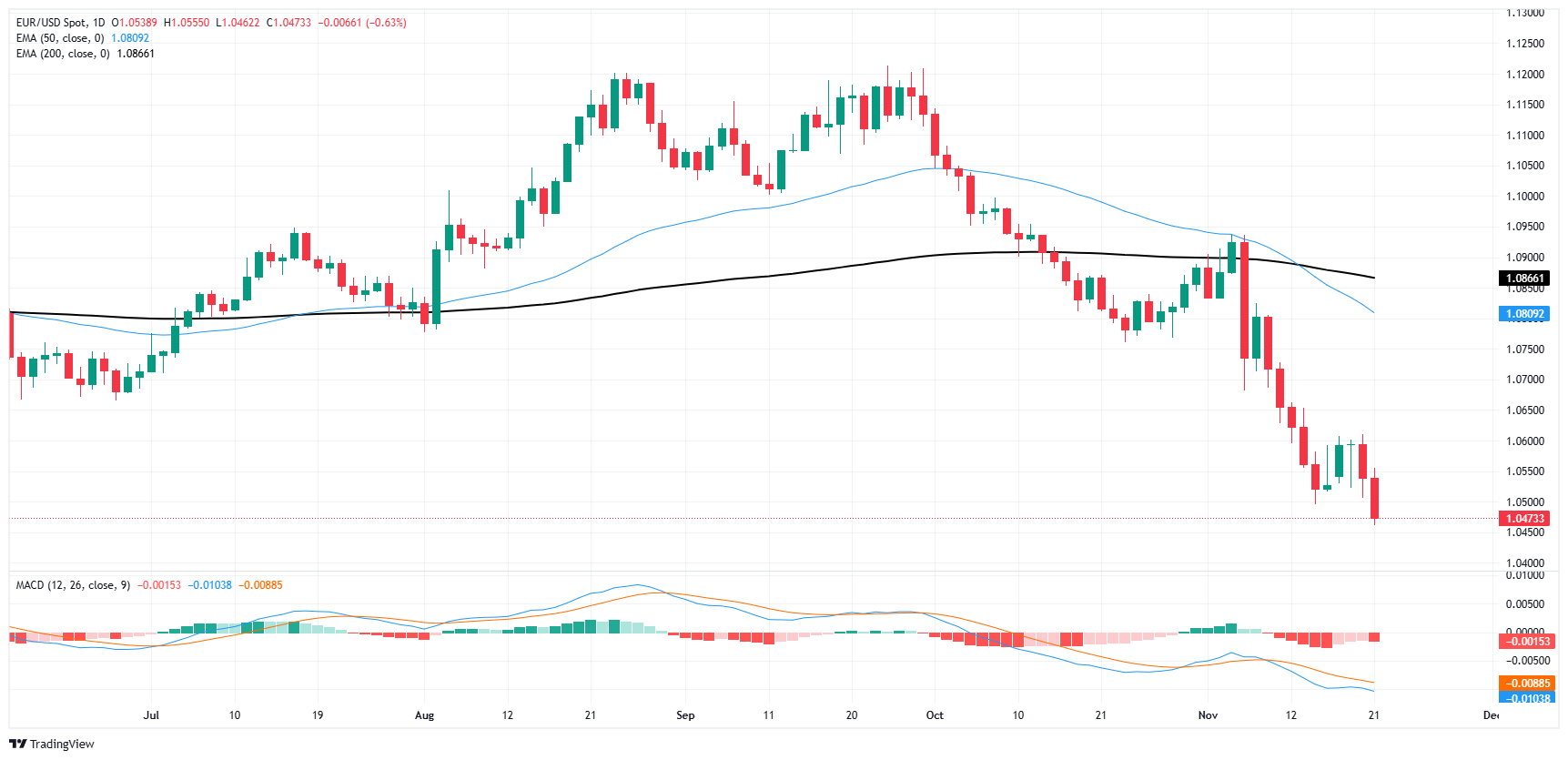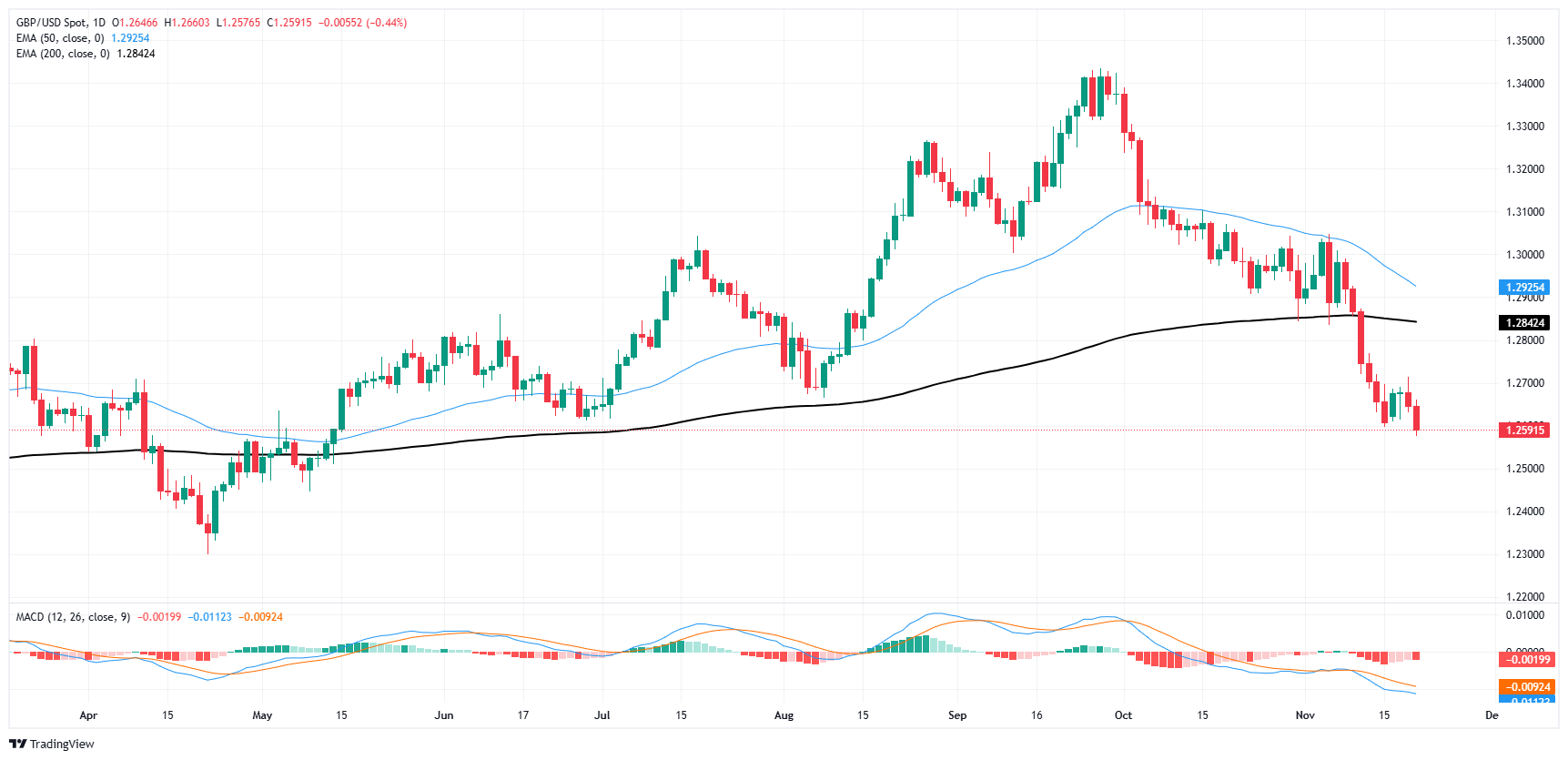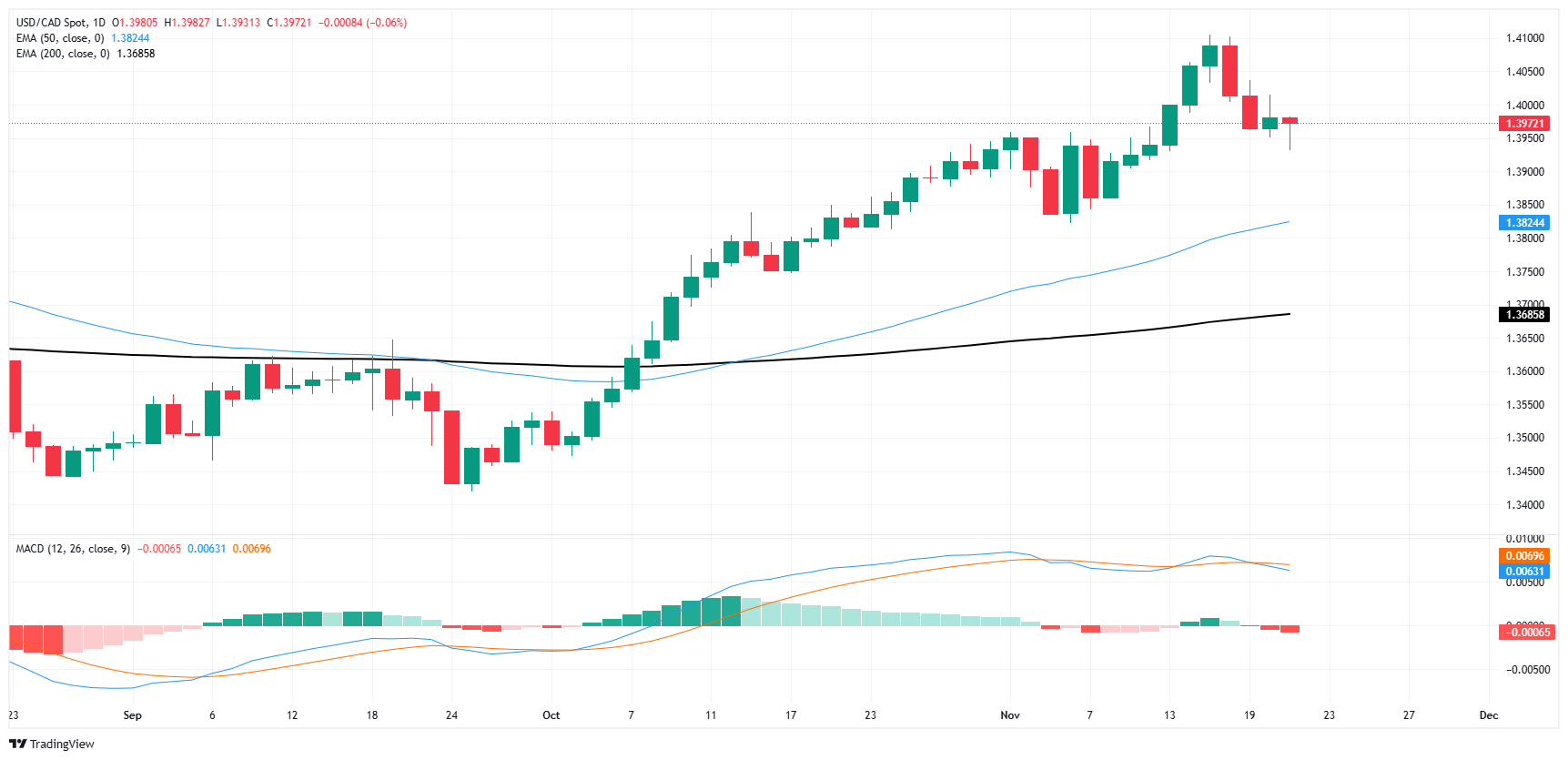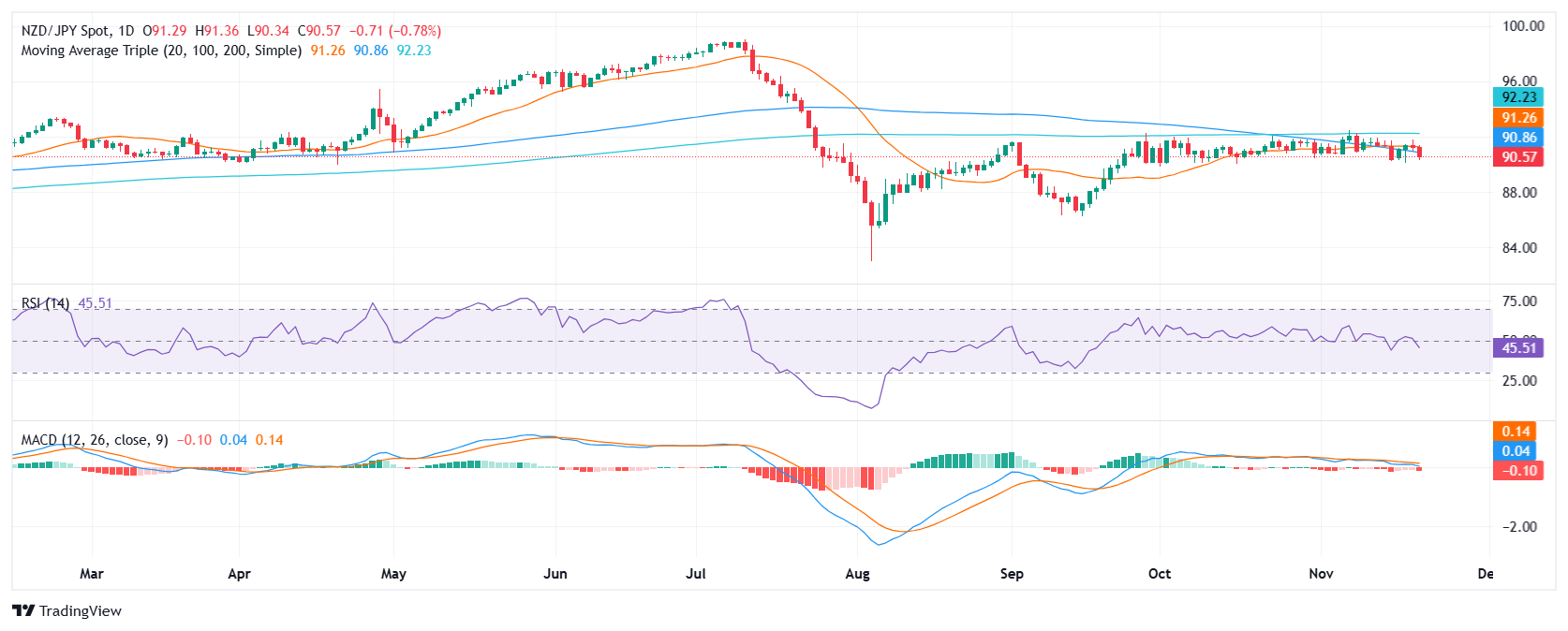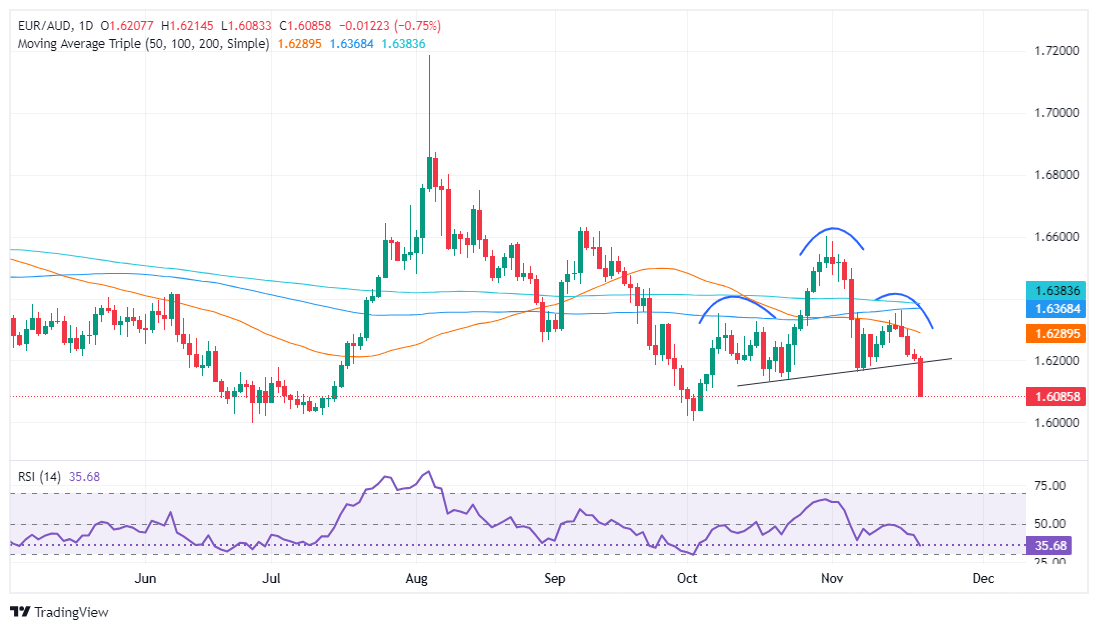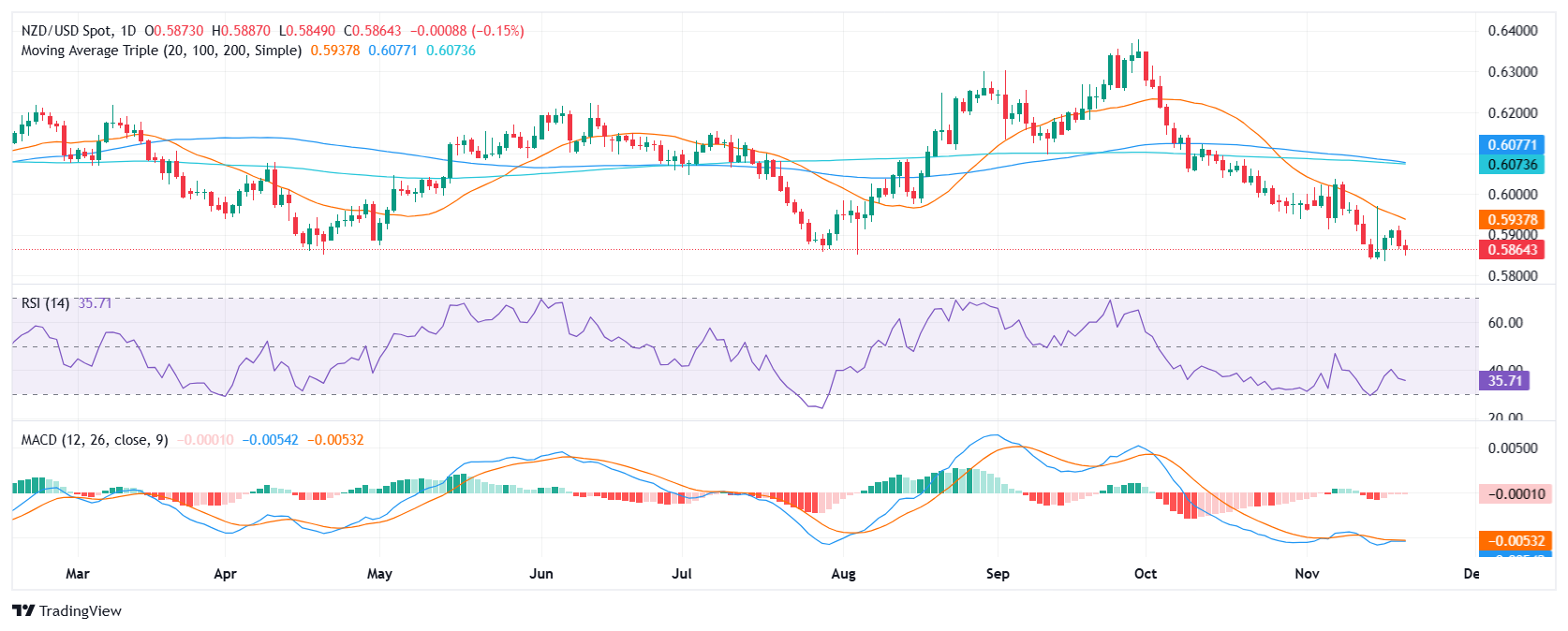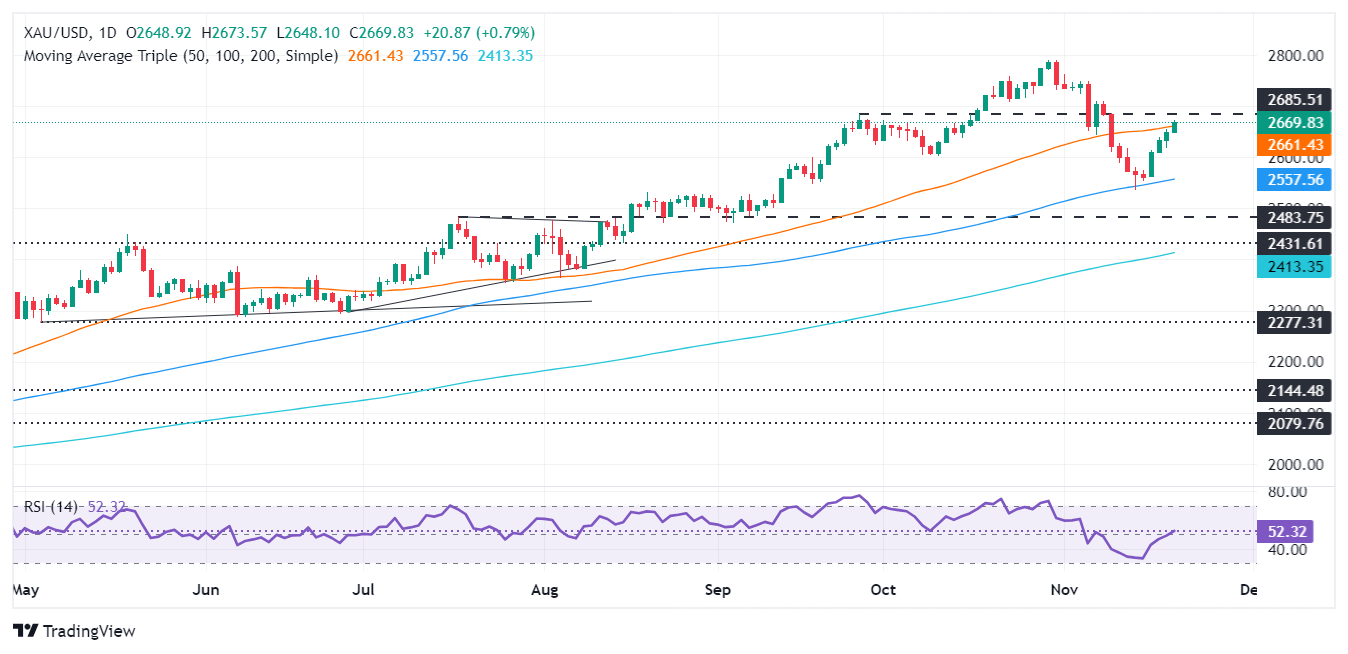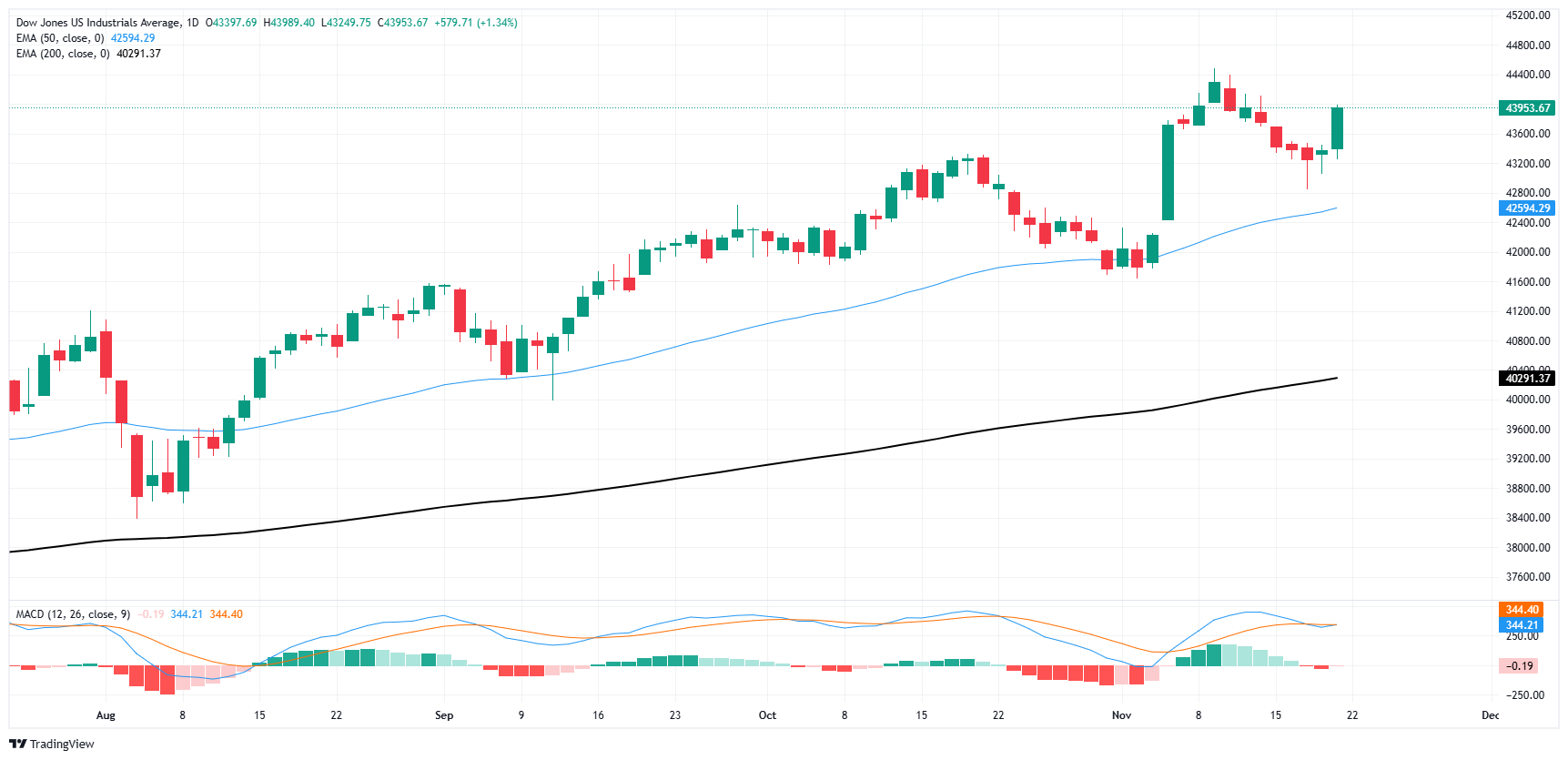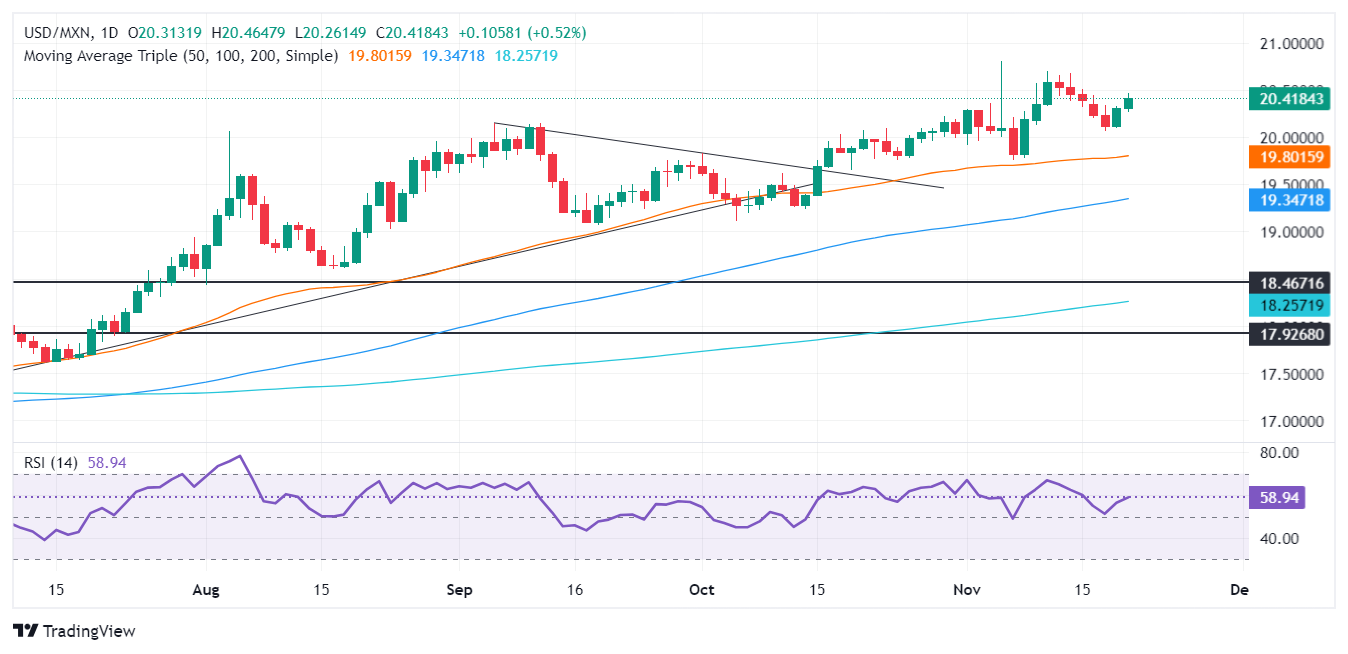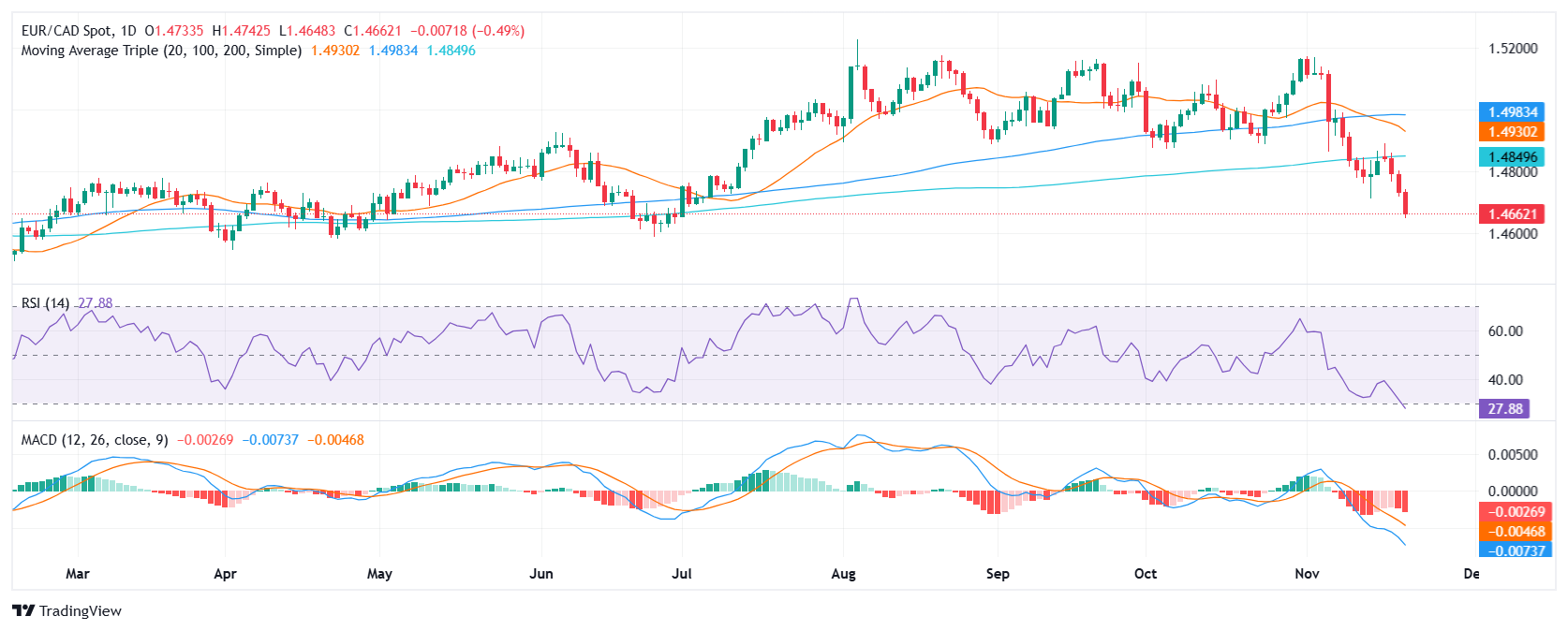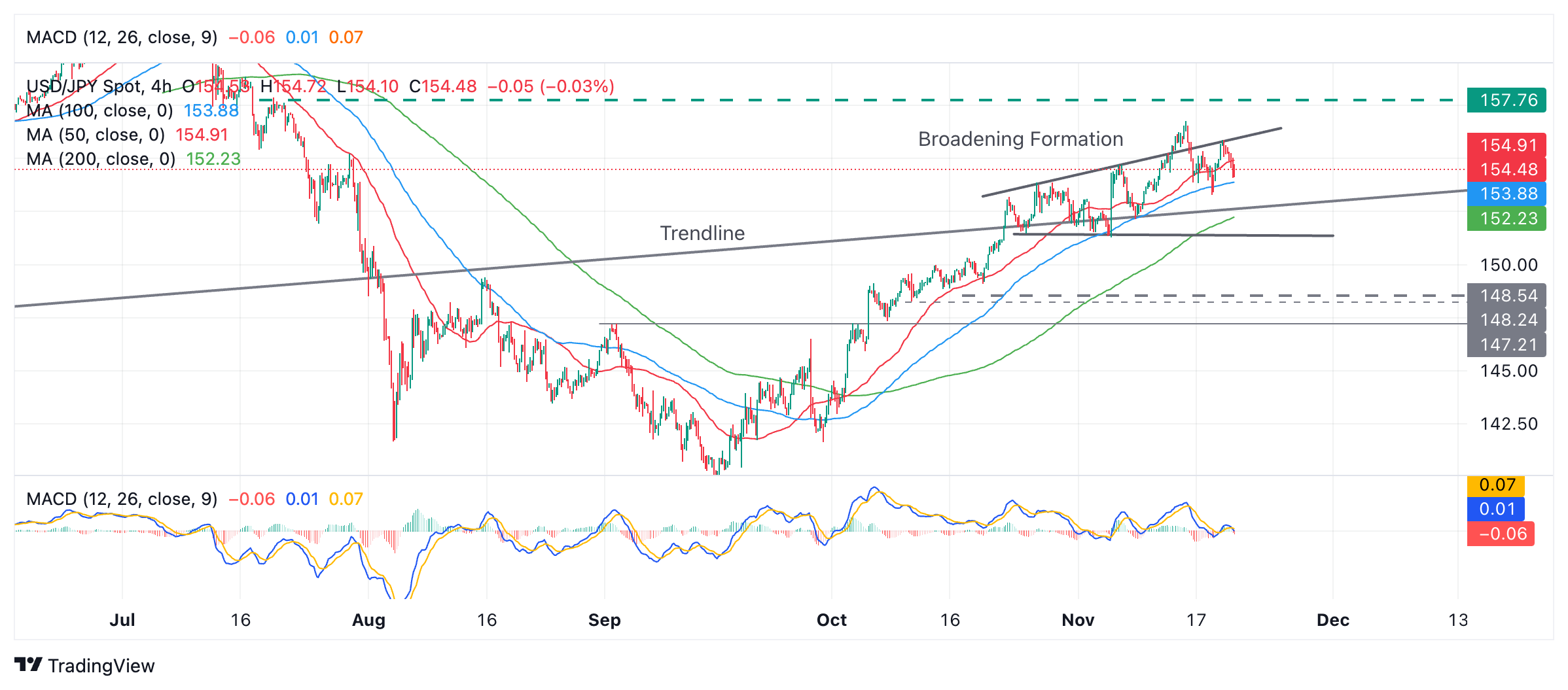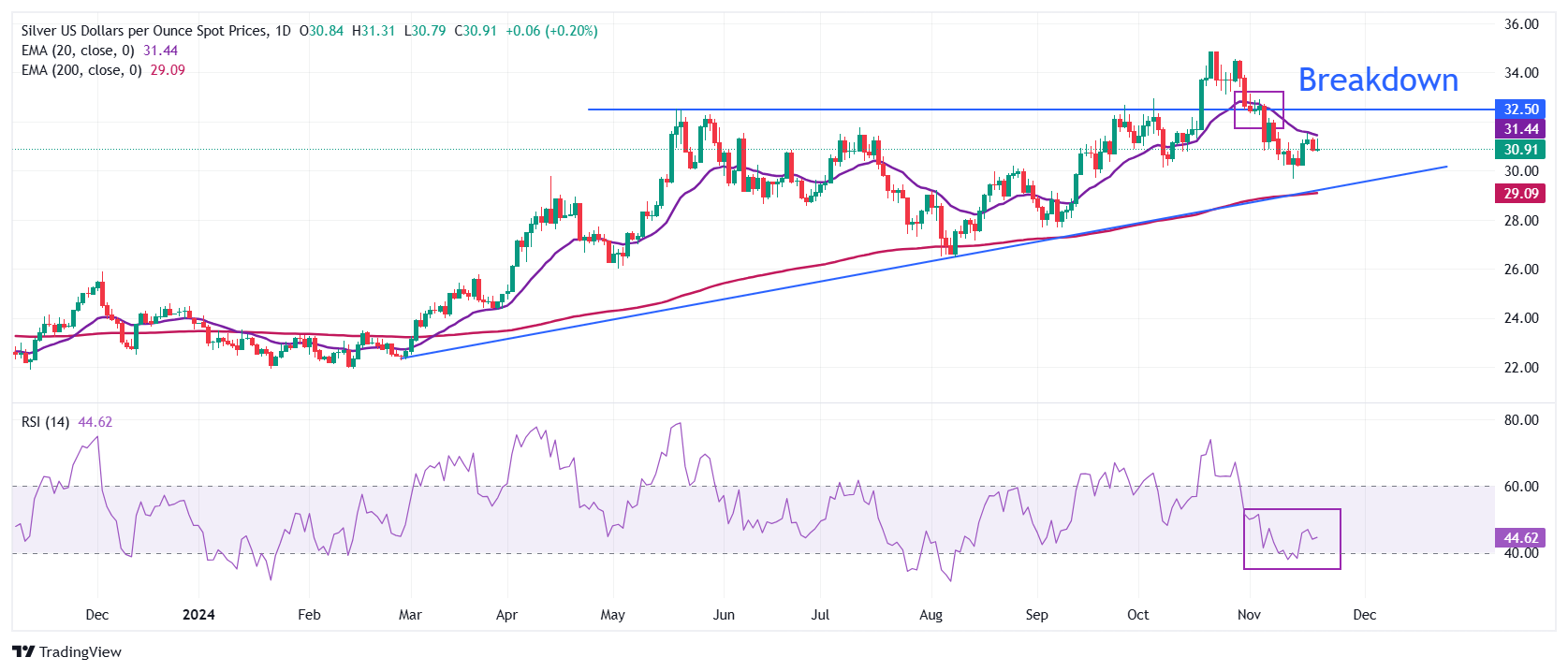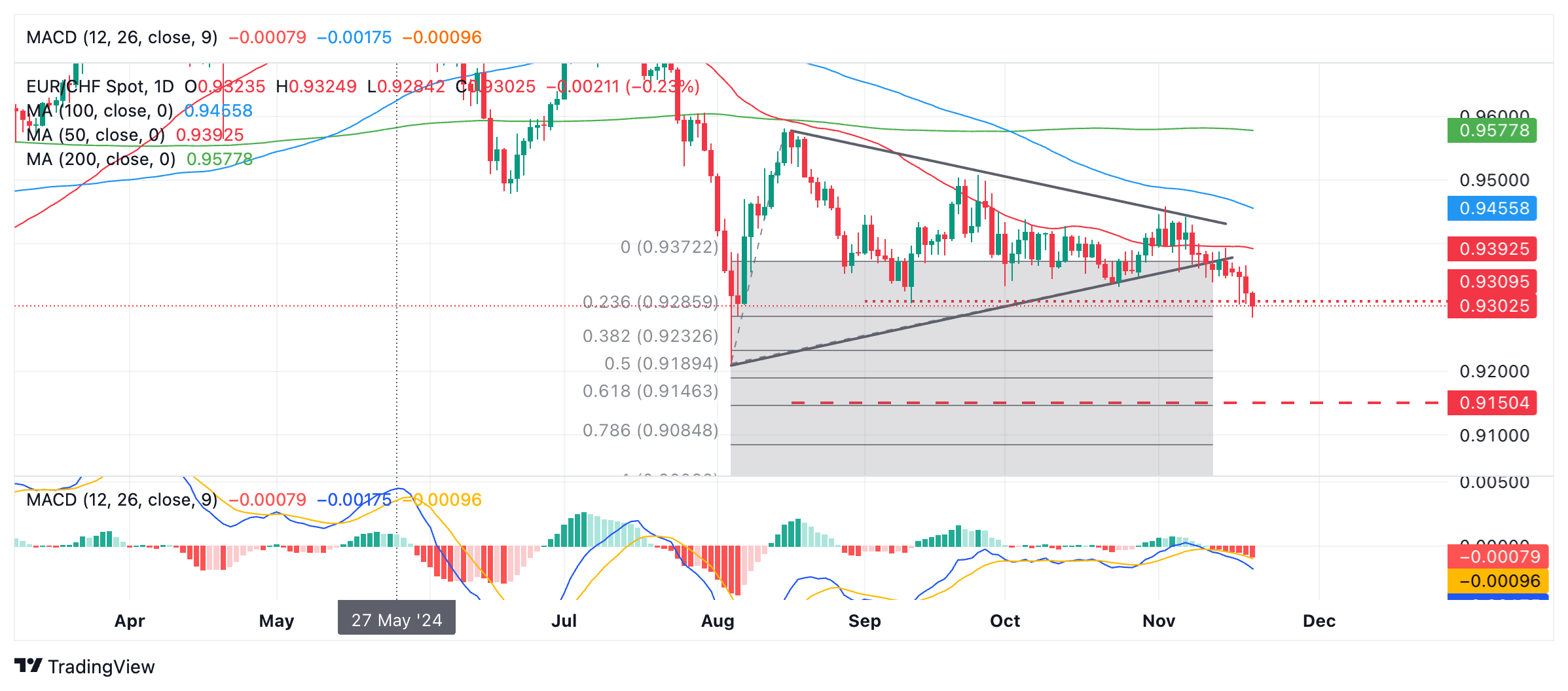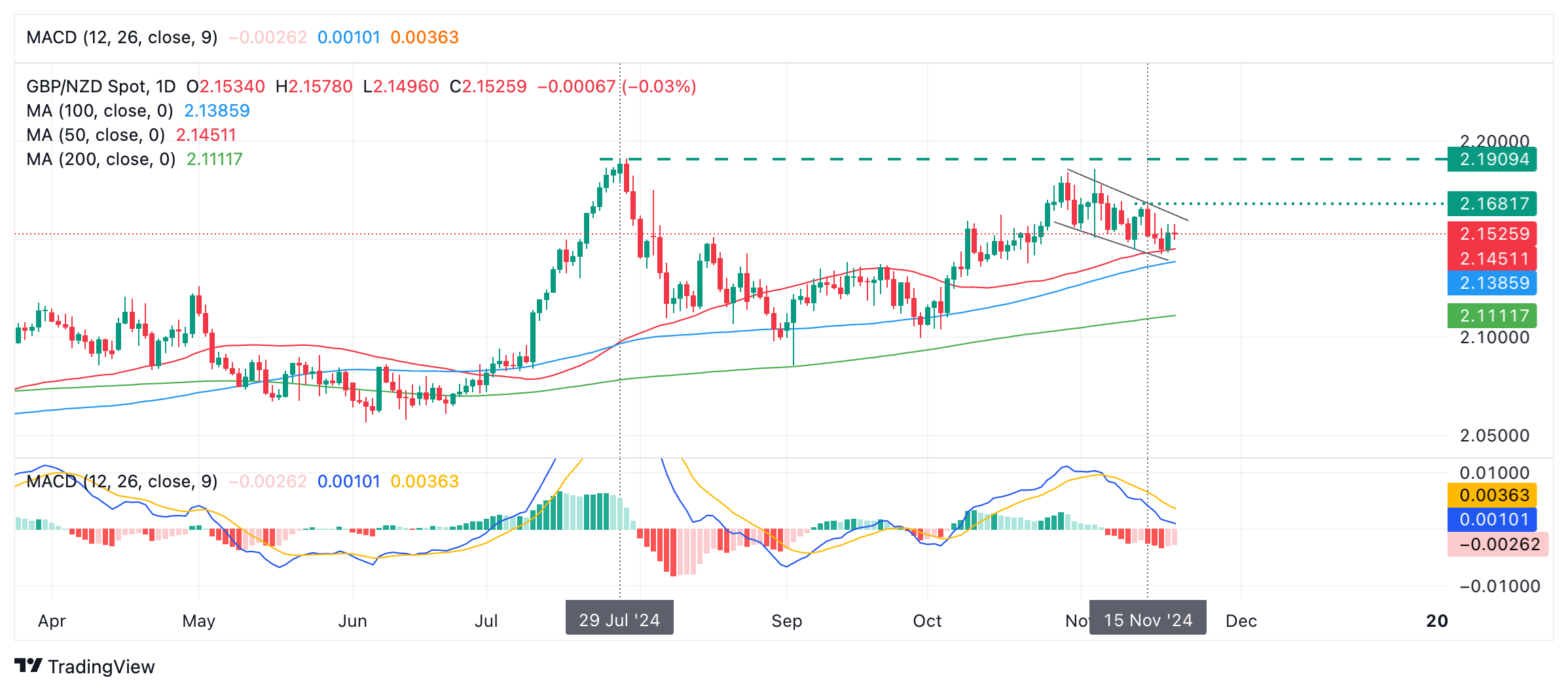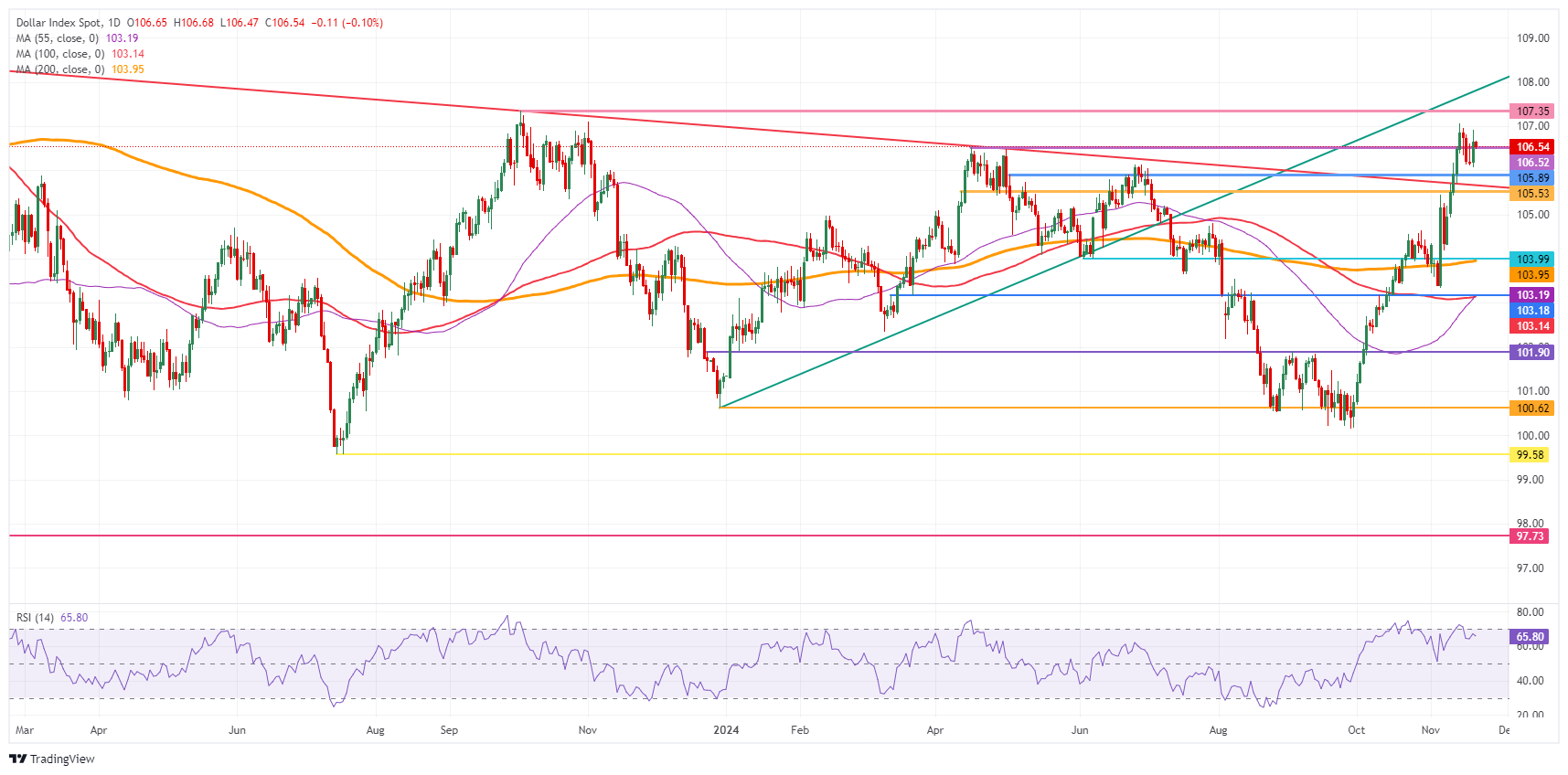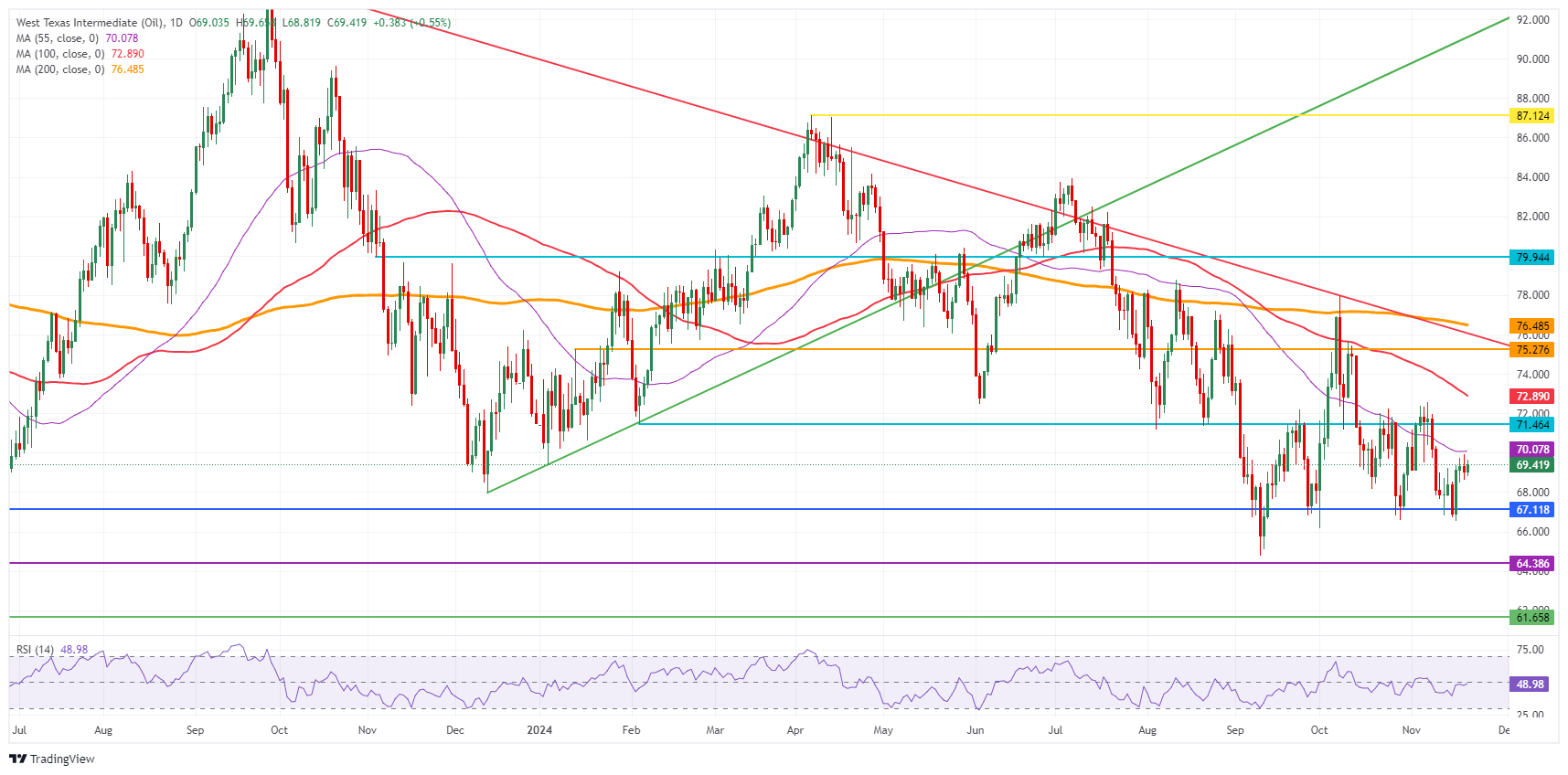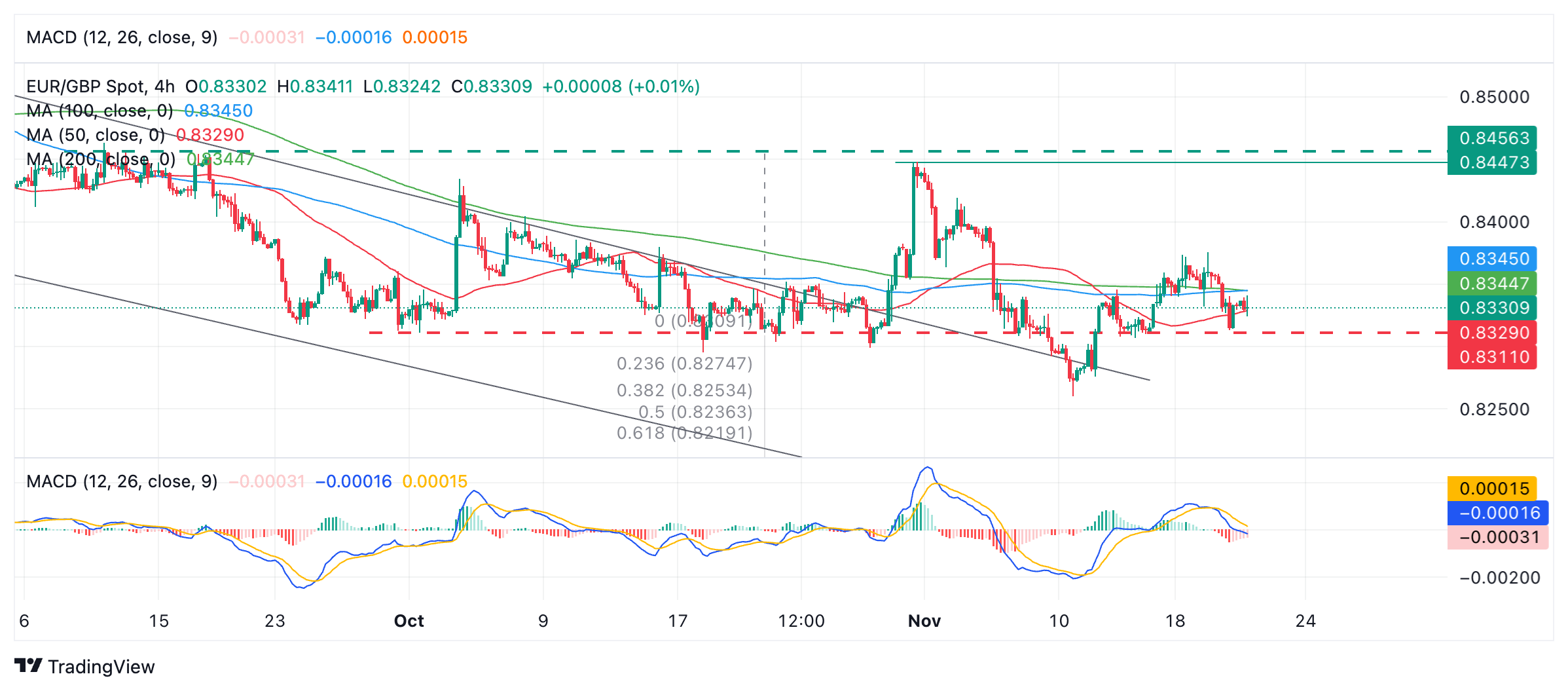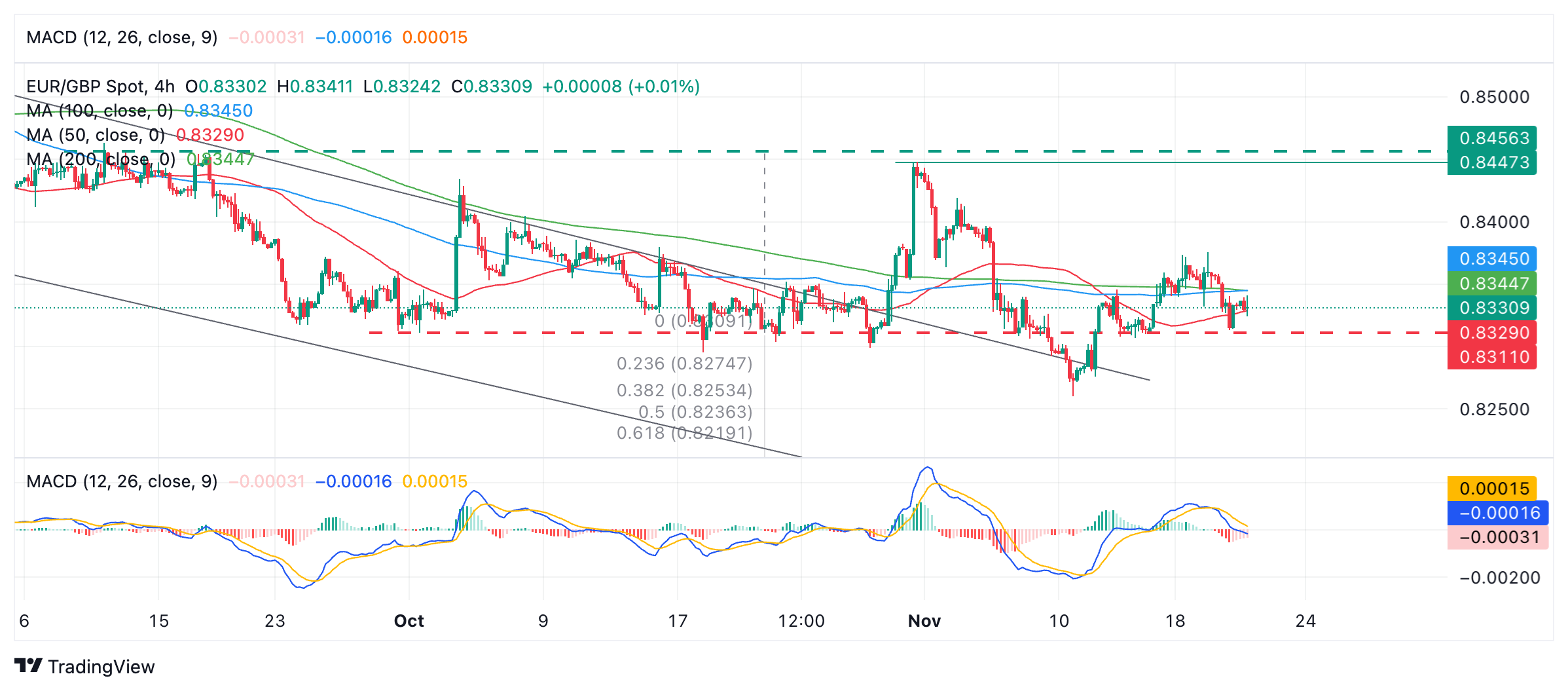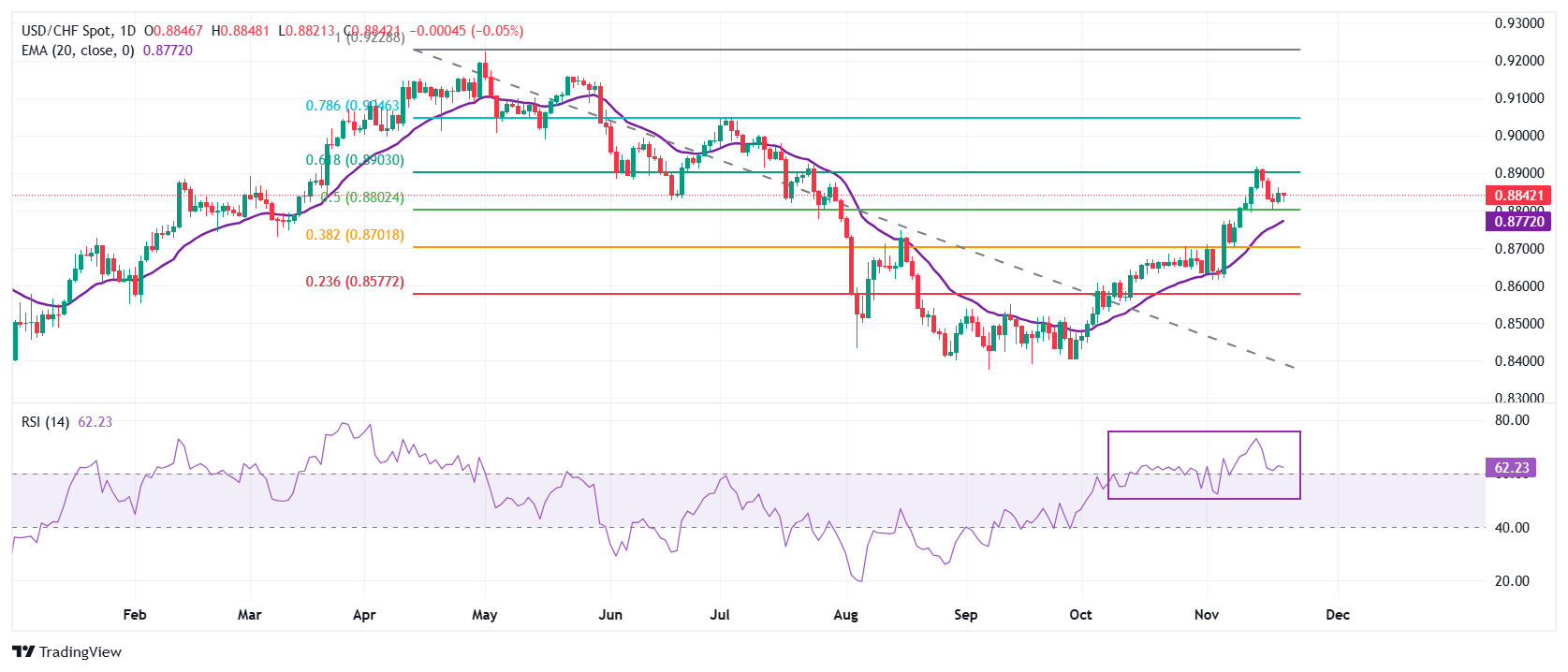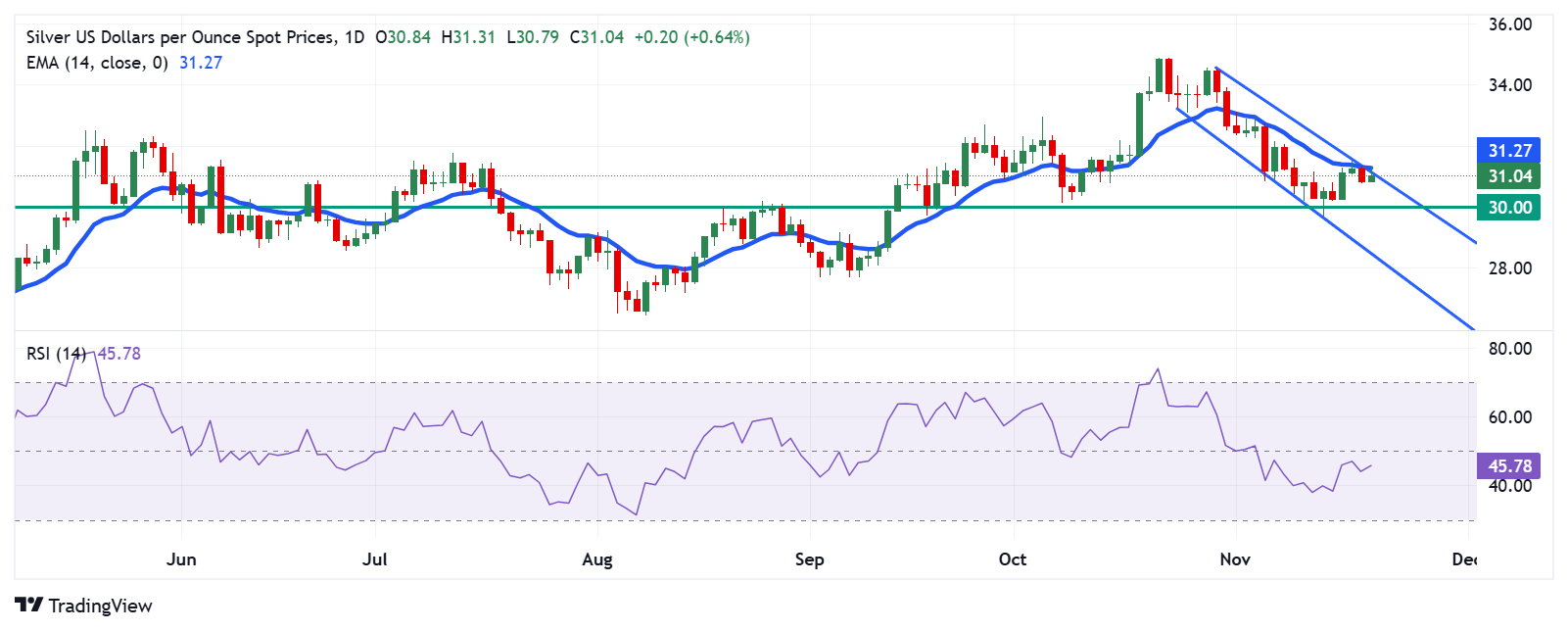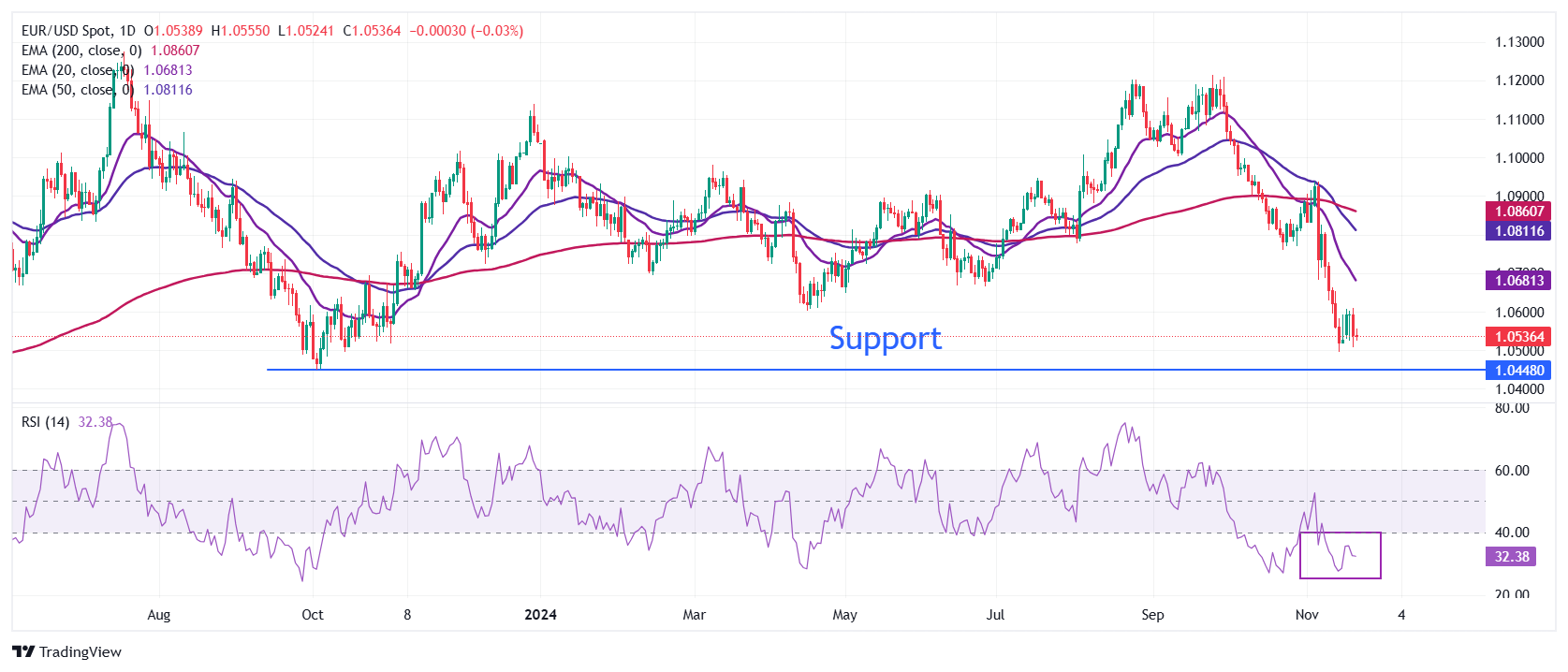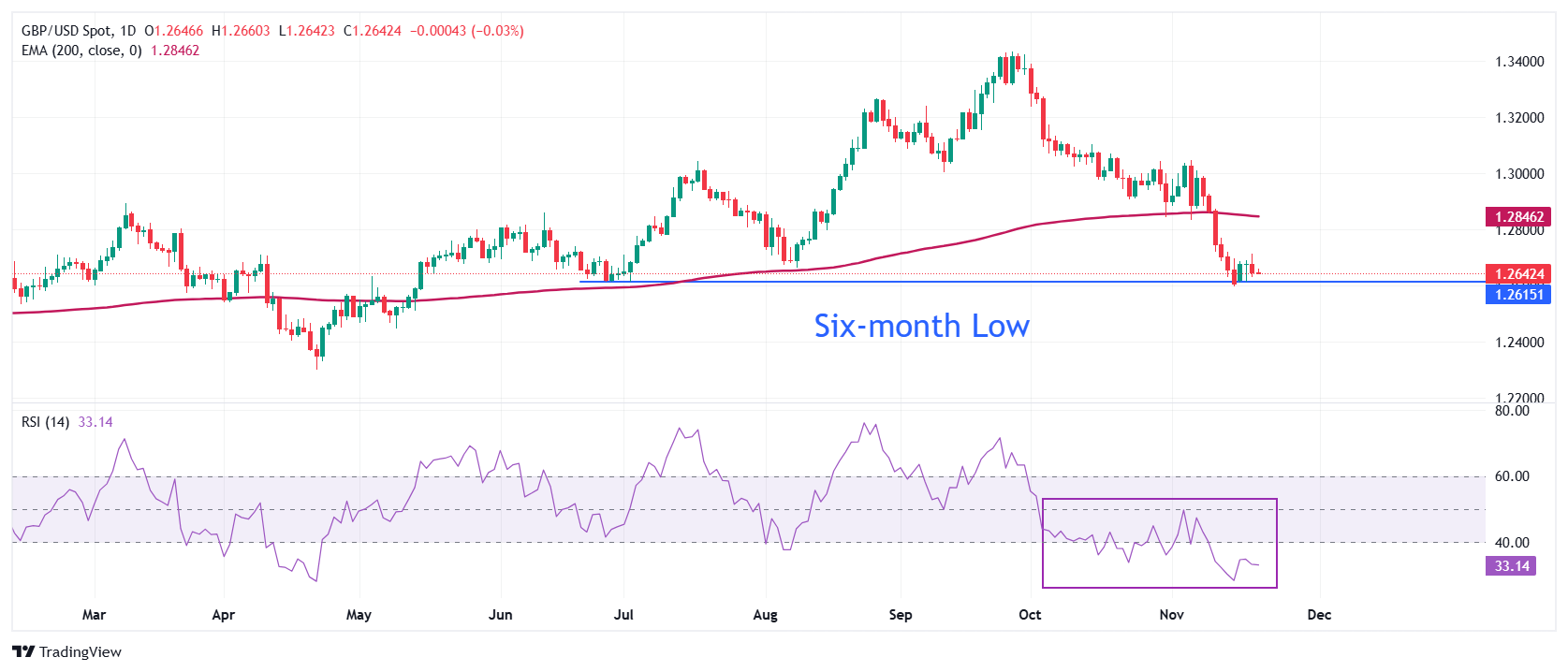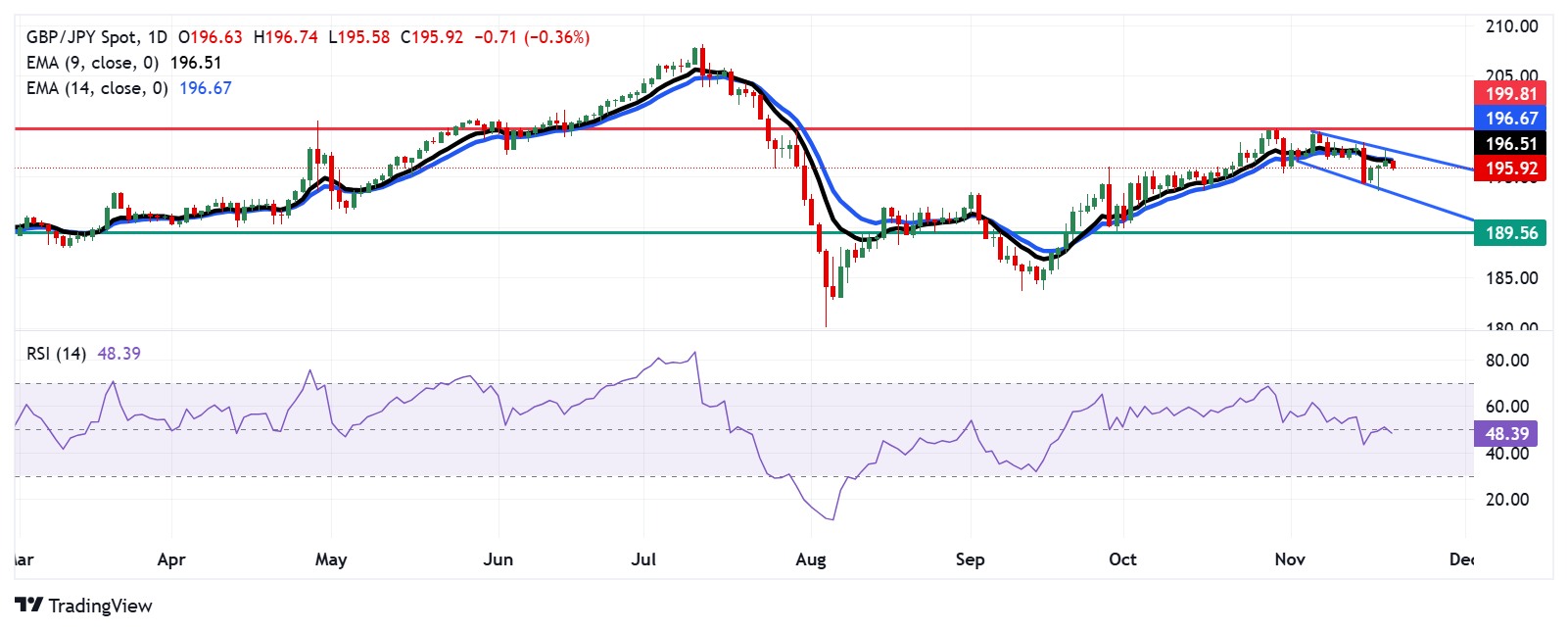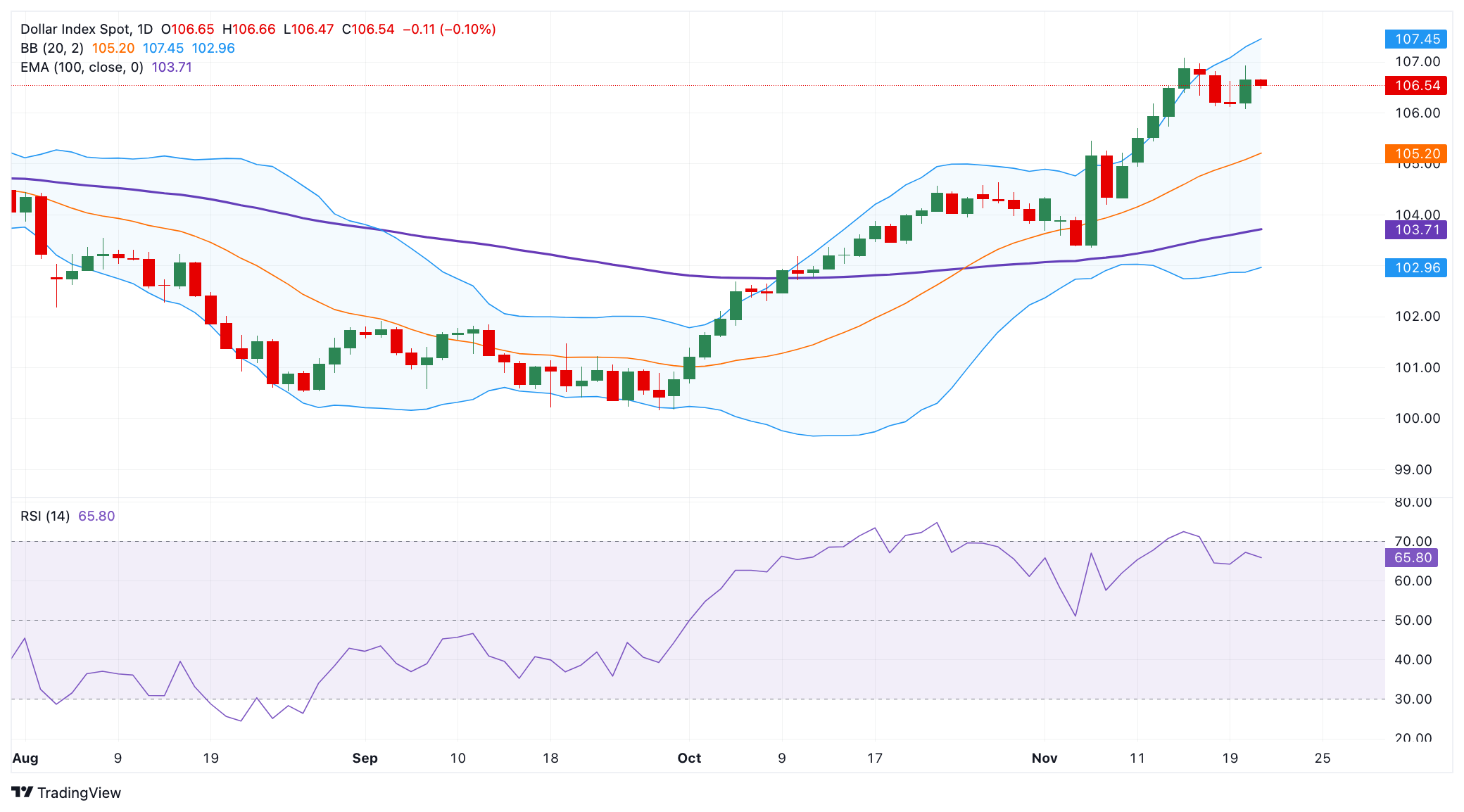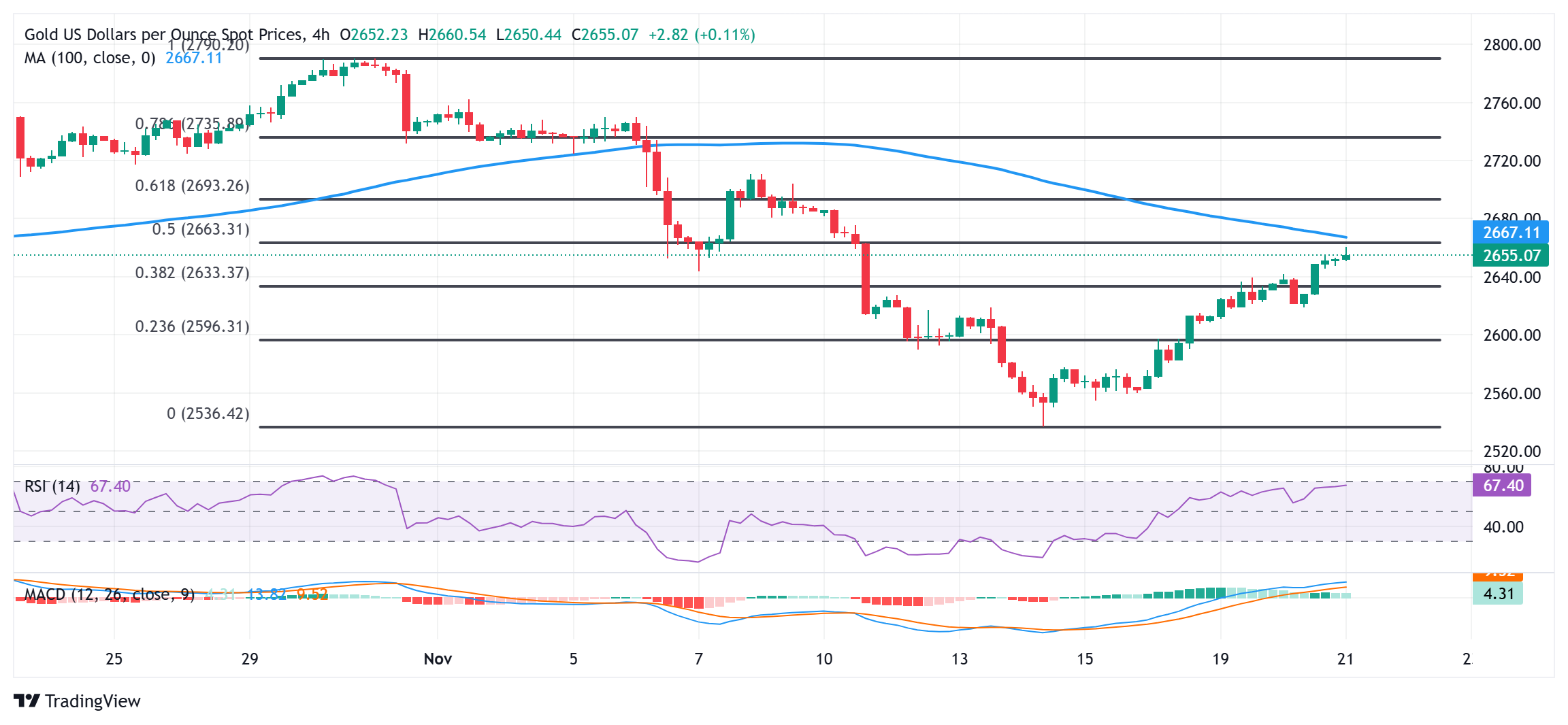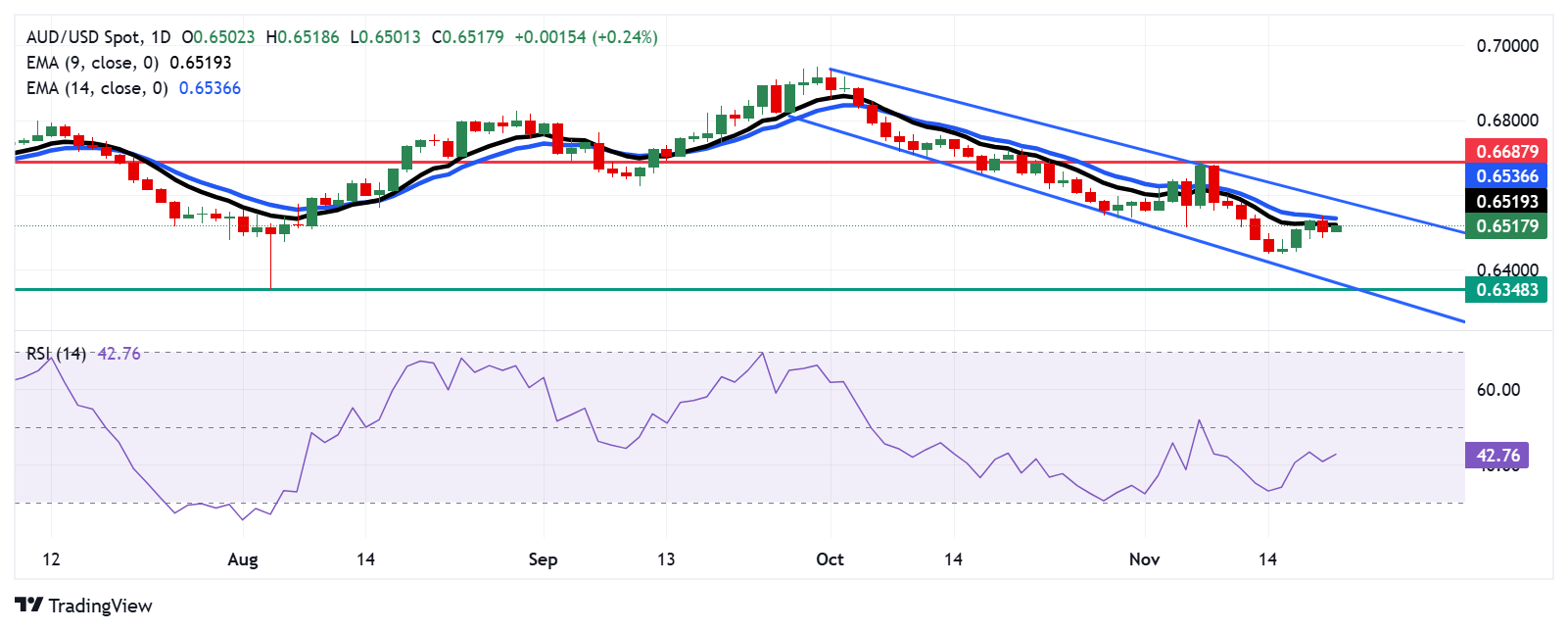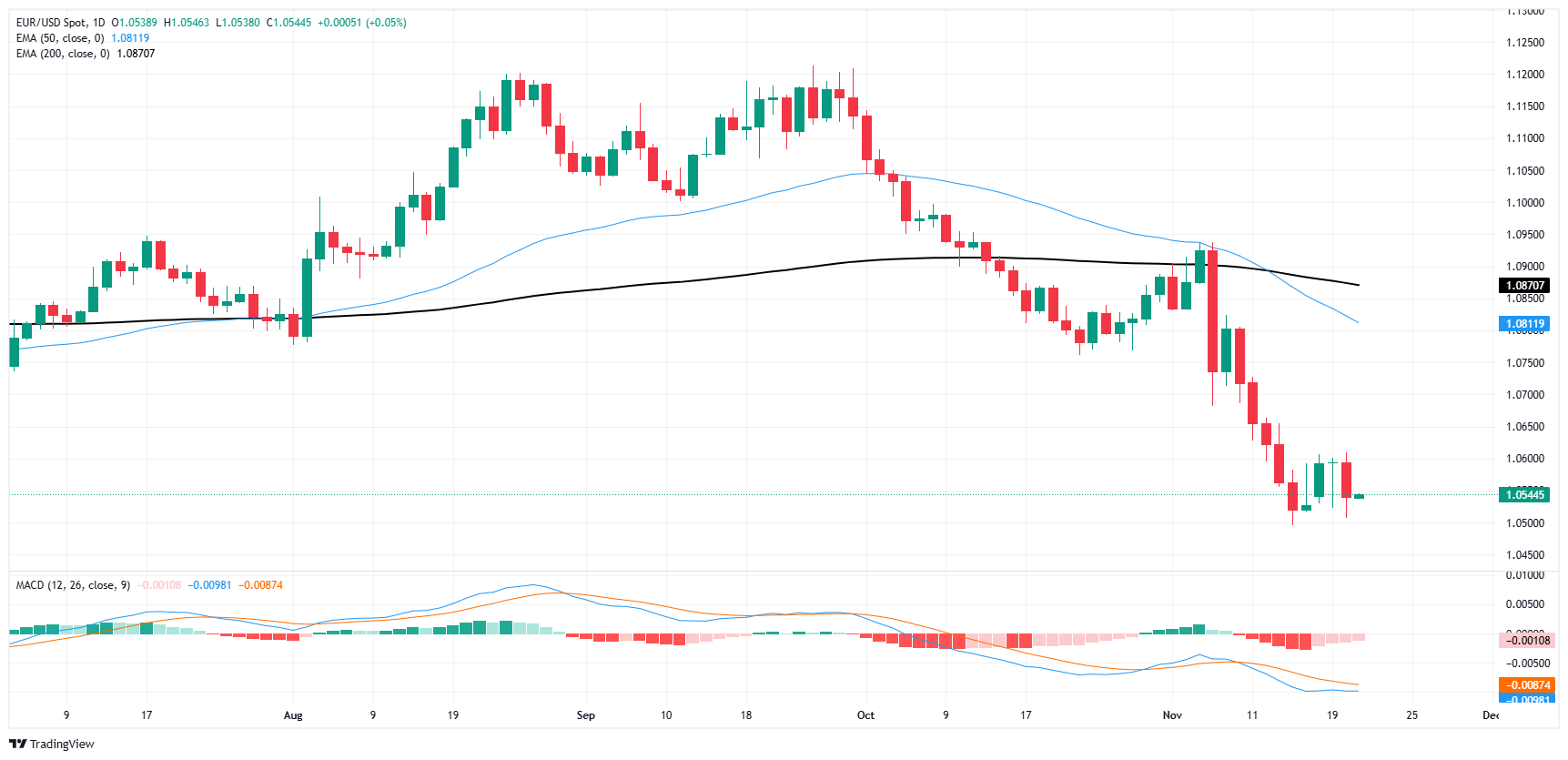- The Mexican Peso is consolidates before the release of Mexican Retail Sales data.
- The MXN ended a five-day winning streak on Wednesday after the Mexican Congress voted through more controversial reforms.
- USD/MXN could be unfolding an up leg within a range that is part of a larger Measured Move pattern.
The Mexican Peso (MXN) consolidates in its most-heavily traded pairs during the European session on Thursday. This follows the Peso’s average half-a-percent fall in its key pairs on Wednesday, which marked an end to a five-day winning streak.
The factors leading to the Peso’s weakness on Wednesday include comments from the Governor of the Bank of Mexico (Banxico) Victoria Rodríguez Ceja, the voting through by the Mexican Congress of controversial reforms to autonomous bodies, and heightened geopolitical risk from Russia’s decision to lower the bar for its use of nuclear weapons. Higher geopolitical tensions tend to disproportionately disadvantage risk-sensitive emerging market currencies such as the MXN.
Mexican Peso traders await key data
The Mexican Peso consolidates on Thursday ahead of the release of key Mexican Retail Sales data for September. Economists expect the figures to show a 0.1% MoM rise, unchanged from the previous month. On a yearly basis, sales are foreseen plunging by 1.2% from the 0.8% decline previously.
Although the data is lagging – it is for the month of September – a better-than-expected result could support MXN in its pairs whilst a lower-than-expected reading might result in further weakness. A lower figure could stoke concerns the Mexican economy is slowing down.
In its accompanying statement to the last policy meeting, Banxico said it saw the balance of risks for economic growth as leaning to the downside, and weak Retail Sales data would fuel this conclusion, with negative implications for the Peso.
Further, it would support comments from Banxico head Victoria Rodríguez Ceja that the central bank plans to continue reducing its benchmark interest rate, citing progress in lowering inflation. Lower interest rates are negative for a currency as they reduce foreign capital inflows.
Mexican Congress votes to scrap five autonomous and regulatory bodies
On Wednesday, the Mexican Congress voted through a controversial reform scrapping or replacing five of Mexico’s independent regulatory bodies, according to El Financiero. The move probably contributed to the Peso’s weakening on the day.
It is one of a number of reforms, including a radical overhaul of the judiciary, that have raised concerns among investors, and were responsible for the MXN’s 10% decline following the election in June. Critics of the reforms say they will remove another important check and balance to the power of large organizations and the state, whilst proponents say the autonomous agencies are riddled with corruption and thus unnecessary.
One of the most controversial bodies to be dissolved is The National Institute for Transparency, Access to Information, and Data Protection (INAI), which “has the authority to require government agencies, political parties, labor unions, or other public bodies to comply with freedom of information requests from individuals or organizations,” according to Human Rights Watch. The international NGO flagged concerns after previous President Andres Manuel Lopez Obrador decided to block the election of commissioners to fill vacant seats at INAI, disabling its ability to make decisions. INAI also gives Mexican citizens the right to safeguard their personal data.
The move is likely to inflame relations with the US government, which under Trump’s upcoming leadership is threatening to place tariffs on Mexican imports. This might be seen as another risk to investors because it will raise fears the government and other large organizations in Mexico may not be properly held accountable for their actions.
Technical Analysis: USD/MXN begins possible “C” wave high
USD/MXN may be unfolding a possible “C” wave higher (see chart below) as it completes a Measured Move pattern. These patterns are composed of three waves, in which the first and the third are of a similar length.
USD/MXN 4-hour Chart
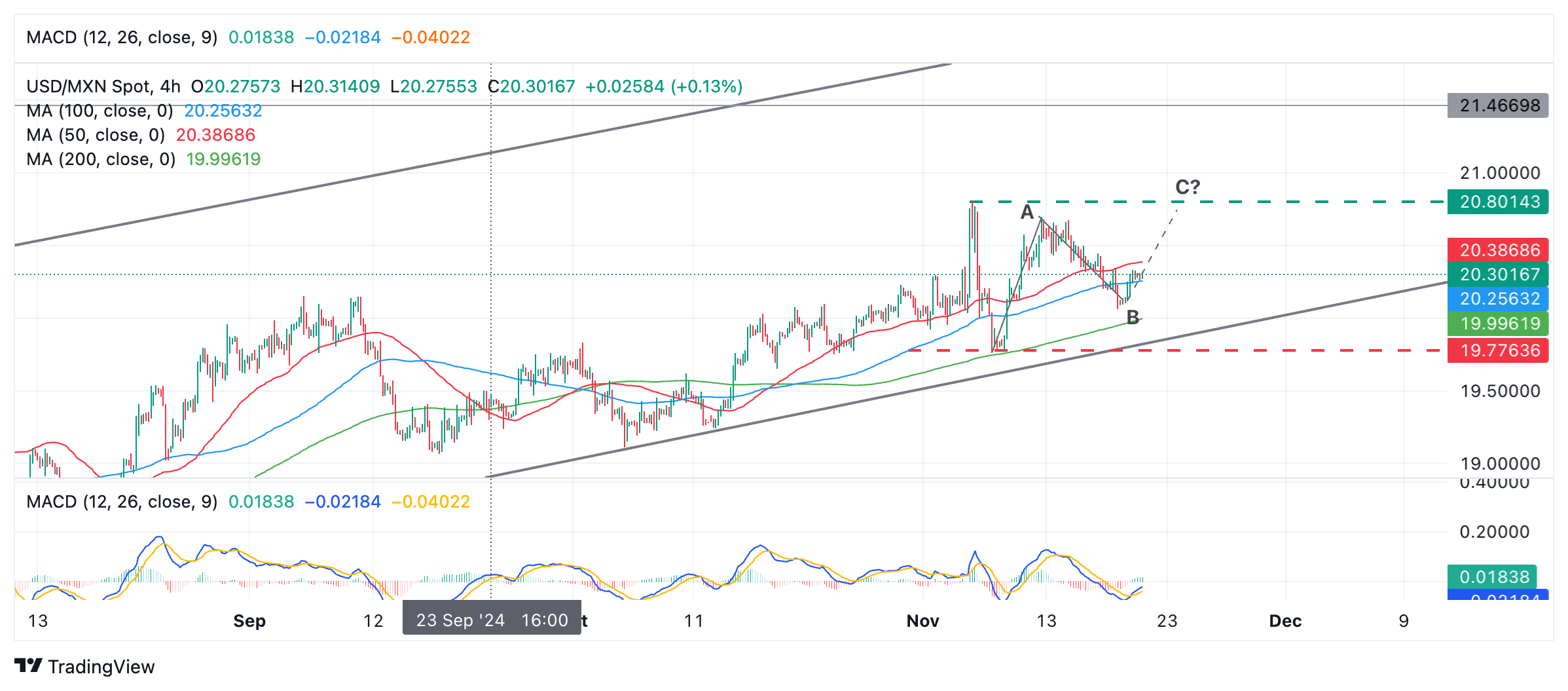
USD/MXN appears range bound in the short term as it oscillates between the 19.70s and 20.80s. The extension of wave C would correspond to an up leg unfolding within this sideways consolidation towards its ceiling (green dashed line).
The (blue) Moving Average Convergence Divergence (MACD) indicator has crossed above its red signal line, supporting evidence that the pair is unfolding higher. As yet, price action has not rallied sufficiently higher, however, to provide confirmation such a leg is unfolding.
